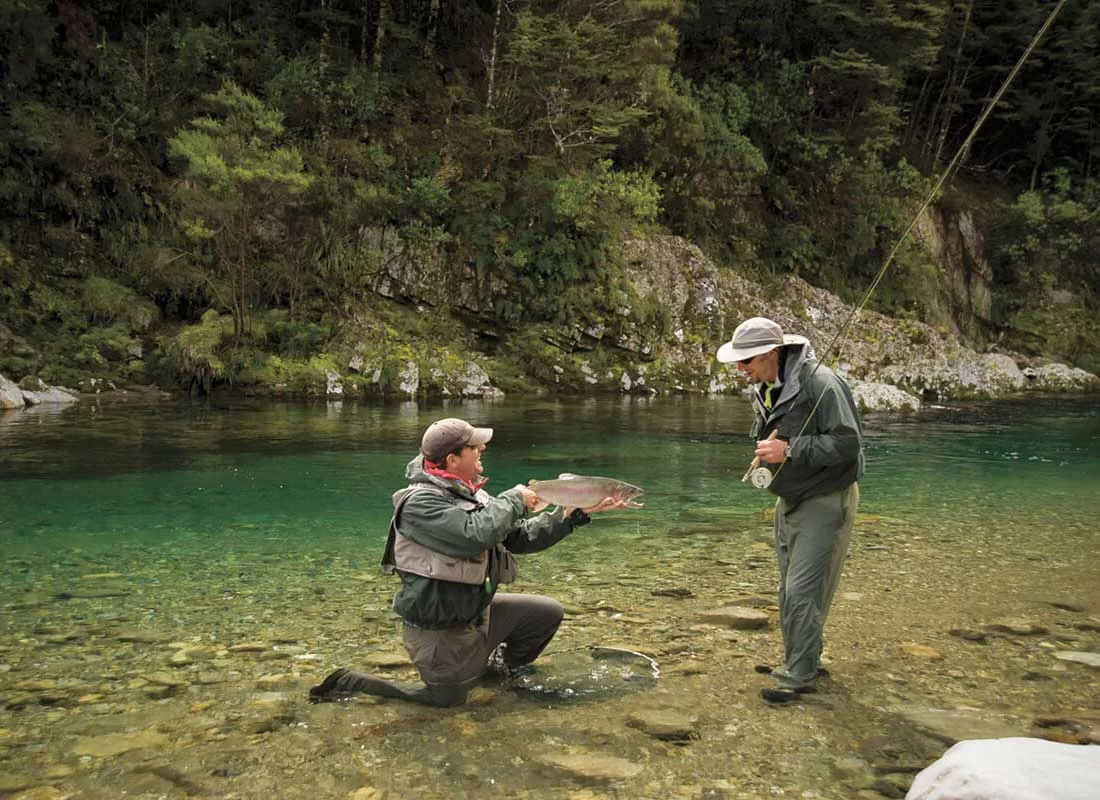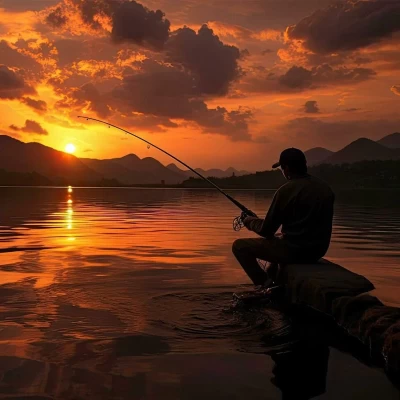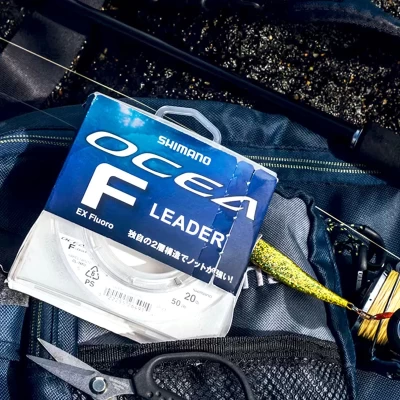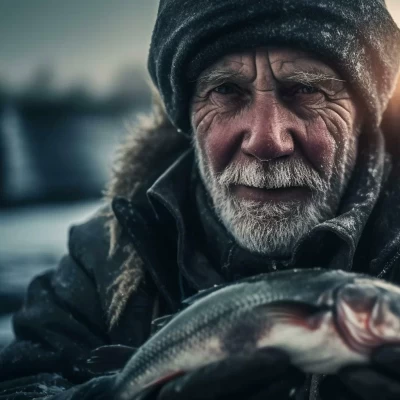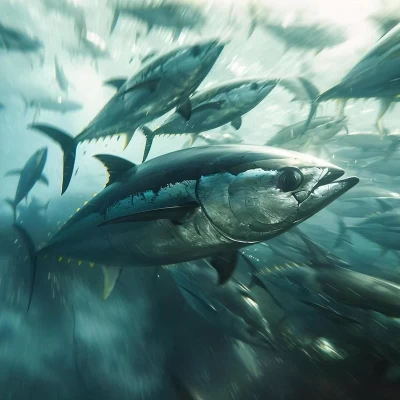You are about to initiate on an exciting journey into the world of sight fishing, a technique that enhances your fishing experience through direct visual interaction with fish in their natural habitat. In this comprehensive guide, you’ll learn imperative tips and strategies that will elevate your skills, from understanding the right equipment to recognizing the best fishing conditions. With patience, precision, and practice, you’ll discover the joy and thrill of successfully spotting and catching fish using this engaging and effective method.
Understanding Sight Fishing
While traditional fishing techniques rely heavily on bait and equipment, sight fishing elevates your experience by emphasizing direct visual interaction with fish in their natural environments. This technique requires you to wade quietly through clear waters or observe from shore or a boat, using your keen eyesight and polarized glasses to identify and track fish, enhancing both the thrill and challenge of your fishing adventure.
Definition of Sight Fishing
Among various fishing methods, sight fishing stands out as a technique that allows you to visually locate and target fish directly. This immersive approach not only enhances your fishing abilities but also reinforces the connection to the aquatic environment, as you adapt your movements and strategies to effectively engage with the fish you see.
History and Evolution of Sight Fishing
Fishing can be traced back thousands of years as a means of sustenance, but sight fishing has experienced significant evolution. Initially, primitive anglers relied on observing fish behavior and patterns with basic tools; however, over time, advancements in gear and techniques have enhanced your ability to spot and engage with fish in various environments, transforming this method into a popular sport.
A notable development in sight fishing was the introduction of polarized sunglasses, allowing you to reduce glare and see deeper into the water. The combination of these glasses and refined casting techniques has expanded the practice, making sight fishing accessible and enjoyable for anglers of all ages and experience levels, whether in freshwater or saltwater settings.
Key Principles of Sight Fishing
Between understanding fish behavior and environmental factors, the key principles of sight fishing revolve around your ability to remain stealthy, observant, and precise. By selecting the right time and conditions, you can maximize your chances of spotting fish and effectively presenting your bait to entice them.
Plus, mastering patience and control is important; the more you practice, the better you’ll become at reading the water and fish movements, increasing your effectiveness as an angler. Focus on creating realistic lure movements and leveraging natural surroundings to enhance your chances of success, transforming your fishing experience into a rewarding adventure in nature.
Why Use Sight Fishing
If you seek an immersive fishing experience, sight fishing offers a unique approach that enhances your engagement with the aquatic environment. This technique not only heightens your attention to detail but also helps you develop a deeper understanding of fish behavior as you observe their natural activities, making every moment spent fishing more rewarding.
Advantages Over Traditional Fishing Methods
Sight fishing provides a level of interaction and control that traditional methods often lack. By being directly involved in the process of observing and selecting your target, you enhance your precision in casting and bait placement, ultimately leading to a more satisfying fishing outcome.
Increased Catch Rate and Targeting Specific Species
With sight fishing, you have the advantage of selectively targeting specific species in their natural habitats. By closely monitoring fish movements and adjusting your techniques accordingly, you significantly increase your chances of making successful catches, as you can adapt to their behaviors in real-time.
But your success in sight fishing not only depends on your observational skills but also on understanding the preferred habitats of various species. For instance, knowing when and where fish spawn can lead to significantly higher catch rates. By employing this technique, you can hone in on specific areas where fish congregation is likely, thus maximizing your effectiveness as an angler.
Connection with the Environment
On a broader level, sight fishing establishes a profound connection with the environment around you. By actively engaging in the natural rhythms of water bodies, you cultivate a greater appreciation for the ecosystems and species you encounter, turning each fishing outing into not just a sport, but a moment of ecological awareness.
Environment awareness allows you to recognize the influences of weather, water temperature, and surrounding structures on fish behavior. This connection not only enhances your skills as an angler but fosters a sense of responsibility toward conservation, ensuring that fishing remains a sustainable pursuit for generations to come.
When to Use Sight Fishing
Now, selecting the right time for sight fishing can significantly enhance your chances of success. This technique thrives in clear, bright conditions that allow for optimal visibility. Generally, sunny days in shallow waters are ideal, as this visibility enables you to see fish more easily and strategize your approach effectively.
Best Seasons and Weather Conditions
To maximize your sight fishing experience, opt for seasons when water clarity is high, such as late spring through early fall. Warm weather generally leads to better fish behavior, with more activity close to the surface and easier sighting in coastal areas, lakes, and rivers. Similarly, sunny days provide excellent conditions due to enhanced visibility.
Time of Day that Maximizes Success
Before heading out, consider early morning or late afternoon as the prime times for sight fishing. During these hours, fish are typically more active and visible, allowing you a greater opportunity to observe their behavior and interact effectively with your bait.
Hence, these times correlate with the natural feeding patterns of many fish species, as they venture closer to the surface in search of food. The calm waters during these cooler times also reduce disturbances, making fish less wary, leading to more successful casts and strikes.
Tides and Water Levels Impacting Fishing
Fishing conditions can also be influenced by tides and water levels, which are important factors to consider. High tides often bring fish into shallower waters where they are more visible and accessible, creating better opportunities for you as an angler.
Maximizes your results by planning your outings around tidal movements. During rising tides, fish tend to explore new areas for food, leading to increased visibility and catch potential. Pay attention to local tide charts to strategize your trips effectively, ensuring you hit the water during these optimal conditions.
Why Fish Gather on Sight Fishing
Despite their elusive nature, fish tend to gather in areas suitable for sight fishing due to their instinctual behaviors and environmental factors. The ability to spot potential prey in clear waters draws fish toward structures like submerged vegetation and rocks, creating natural habitats where you can efficiently locate and catch them.
Environmental Factors Influencing Fish Behavior
Fish are influenced by various environmental factors that dictate their behavior and gatherings. Key aspects include:
- Presence of submerged structures and vegetation
- Water temperature and seasonal changes
- Light conditions and water clarity
After understanding these factors, you can enhance your chances of successful sight fishing.
Role of Light and Water Clarity
Influencing fish movements, light and water clarity play significant roles in successful sight fishing. Clear, well-lit waters provide the visibility necessary for you to spot fish while allowing them to see your bait, making the right conditions important.
Fish thrive in optimal light conditions, often becoming more active during early morning and late afternoon when the light is softer. Clear water enhances visibility, both for you and the fish, increasing the likelihood of spotting them as they seek food or shelter. Adjusting your fishing times to align with these factors can significantly improve your fishing success.
Seasonal Patterns of Fish Movement
For effective sight fishing, understanding seasonal patterns of fish movement is beneficial. Different species exhibit unique migration behaviors throughout the year, which can influence where you find them.
Further, during spawning seasons, many fish congregate in specific areas, making it easier for you to target them. Awareness of the changes in water temperature and food availability during different seasons can help you choose the ideal times and locations for your sight fishing expeditions. Tailoring your approach to seasonal patterns significantly enhances your chances of success.
Fish Species Commonly Caught by Sight Fishing
To maximize your sight fishing experience, focus on species that inhabit shallow waters and can be easily spotted. Common targets include carp, trout, perch, and tilapia, all of which are often found near the surface in clear water environments. These species showcase varying behaviors that can enhance your fishing adventure, making it necessary to understand their habits and habitats for effective catches.
Popular Saltwater Species
Between the waves and the shallows, you will encounter a variety of saltwater species ideal for sight fishing, including redfish and barracuda. These fish often inhabit coastal areas and estuaries, thriving where visibility is high. Their aggressive nature and proximity to the surface make them exciting targets for your fishing endeavors.
Popular Freshwater Species
Species like carp, trout, perch, and tilapia are popular choices when you fish in freshwater. Each species exhibits unique behaviors, enabling you to tailor your approach to your fishing environment. Freshwater areas provide excellent opportunities for sight fishing, particularly in lakes and rivers where visibility allows for spotting your prey easily.
Also, understanding the specific habitats of these freshwater species, such as the structures they inhabit or the depths they prefer, can significantly increase your success rate. Carp, for instance, thrive in shallow waters, often bent on foraging at the bottom. Trout are generally found in fast-flowing streams, while perch may hide around submerged vegetation or rocks. Being mindful of these details will enhance your sight fishing experience.
Species Specific to Sight Fishing Techniques
Sight fishing can be particularly rewarding with species that respond well to visual cues, such as pike and redfish. These fish often display aggressive feeding behaviors, especially in clear waters, making them suitable for your pursuit. Understanding their reactions will enhance your fishing tactics and lead to greater success.
It is vital to recognize that species like redfish and pike exhibit specific feeding patterns that can be advantageous when sight fishing. For instance, pike are known for their ambush tactics, often lurking near structures or vegetation, while redfish are commonly seen cruising in shallow flats. Observing their behavior closely allows you to mimic natural movements effectively, thus increasing your odds of a successful catch.
Essential Gear Used for Sight Fishing
For successful sight fishing, having the right gear can significantly enhance your experience. This includes rods, reels, and lines specifically designed for precision and performance in clear water conditions. The combination of these vital tools allows you to engage more effectively with fish, making your fishing trips more rewarding.
Rods: Types and Specifications
For optimal performance, you should consider various rod types based on your specific needs for sight fishing. Here are some common rod types:
- Fast Action Rods
- Medium-Strength Rods
- Spinning Rods
- Casting Rods
- Ultra-Light Rods
Recognizing the importance of a light and sensitive rod will help you excel in sight fishing.
Reels: Selecting the Right Reel
Gear selection for reels is vital in enhancing your sensitivity and control while fishing. A well-matched reel will ensure smooth casting and retrieving, increasing your chances of catching fish. Choose from spinning reels, baitcasting reels, and low-profile models based on your fishing environment and style.
And when it comes to baitcasting reels, their top-mounted brake system offers increased precision, making them ideal for sight fishing in complex habitats like submerged structures. Spinning reels are excellent for ease of handling, perfect for beginners or those fishing in shallow waters.
Lines: Monofilament vs. Braid vs. Fluorocarbon
Among the types of fishing lines, you will encounter monofilament, braid, and fluorocarbon, each offering unique benefits based on the fishing environment. Your choice should depend on visibility and water clarity conditions, which can impact how fish react.
Even though each type has its strengths, fluorocarbon is often preferred for its invisibility underwater, making it an excellent choice for sight fishing. Monofilament offers more stretch, while braid provides remarkable sensitivity, making each line type suitable for different fishing styles and conditions.
Essential Rigs and Hooks for Sight Fishing
After you’ve gathered the right gear, familiarizing yourself with imperative rigs and hooks for sight fishing is next. The right setup can significantly impact your success. Utilizing various rigs allows you to adapt to different fish behaviors and environments, ensuring effective presentations in shallow waters or near structures. This adaptability enhances your chances of getting that thrilling catch while you immerse yourself in the beauty of the surroundings.
Popular Rigs Used in Sight Fishing
Against the backdrop of sight fishing, several rig styles are commonly employed to increase your success rate. The Texas rig, Carolina rig, and drop shot are popular choices that enable you to present lures effectively to wary fish while maintaining optimal movement in clear waters. Each rig style offers versatility for different conditions, enhancing your fishing experience.
Choosing the Right Hooks
Fishing for success begins with selecting the right hooks for your rigs. The choice of hook impacts your ability to secure a catch effectively, so it’s imperative to consider the fish species you are targeting. Hooks should be sharp and appropriately sized, as this increases your chances of penetrating the fish’s mouth and keeping it on your line during the fight.
Also, consider the hook type based on the bait you are using. For instance, circle hooks work well with live bait, while jigs may benefit from offset hooks for better weedlessness in rocky areas. Ensuring that your hooks are strong yet lightweight will allow for subtle presentations crucial for enticing fish in clear water.
Customizing Rigs for Specific Environments
Hooks can also be optimized based on your fishing environment, ensuring the best chance of success. You might find that altering your rig for specific depths or structures, such as reefs, vegetation, or sandy bottoms, serves to improve your bait’s realism and visibility. By doing so, you enhance your chances of attracting nearby fish.
Used wisely, customizable rigs can transform your fishing approach depending on the environment you are in. For example, in weedy areas, incorporating weedless hooks or using a heavier weight can help you navigate obstacles without spooking fish. Tailoring your presentation to suit specific conditions can often make the difference between a successful day on the water and coming back empty-handed.
Essential Baits and Lures Used for Sight Fishing
Many anglers find that selecting the right bait and lures significantly enhances their sight fishing experience. Utilizing the appropriate bait not only increases the chances of catching fish but also allows you to mimic the natural movements of prey in the water. Whether you prefer using live bait, artificial lures, or flies, the effectiveness often lies in their ability to blend seamlessly with your surroundings and attract the fish you aim to catch.
Saltwater
Behind the allure of saltwater fishing are various baits that embrace the diverse ecosystems found in coastal regions. Natural baits like shrimp, crabs, and small baitfish are excellent choices for tempting species such as redfish and barracuda, as these mimic their natural prey. Additionally, lures like topwater plugs and soft plastics can produce exciting strikes when you present them in a convincing manner.
Freshwater
Essential baits for freshwater sight fishing include diverse options that appeal to species like trout, perch, and carp. Using natural bait such as worms or minnows can yield positive results, while artificial options like crankbaits and jigs allow for varied presentations to entice the fish effectively. Pay attention to color and movement to increase your chances of success, particularly in clear waters.
Another effective strategy in freshwater is to mimic the specific feeding behavior of the target species. For example, using slow, subtle movements with your lures can attract wary fish like trout in flowing streams or lakes. Understanding the local ecosystem and the preferred prey of the fish can guide you in selecting the right bait and enhancing your sight fishing experience.
Where to Do Sight Fishing
Your choice of location is vital to the success of sight fishing, as different environments offer unique opportunities for spotting and catching fish. Target clear waters where visibility is high, including shallow coastal areas, lakes, rivers, and coral reefs. Knowing the behavior of specific fish species in these habitats can enhance your success and enrich your fishing experience.
Coastal Areas: Key Locations
Fishing in coastal areas provides fantastic opportunities for sight fishing, particularly in warm, tropical waters where clarity is excellent. Look for shallows, sandy bottoms, and vegetative cover where fish tend to congregate. Tide changes can also influence fish movement, making these locations vibrant hotspots for a productive day of fishing.
Open Sea: Best Practices
With the right techniques, you can excel at sight fishing in the open sea by targeting areas where fish are most active. Focus on shallow zones around reefs and submerged structures, as they attract various species. Utilize polarized sunglasses to cut glare and enhance visibility.
Sight fishing in the open sea often requires patience and stealth. Approach your fishing spots quietly, positioning yourself downwind when possible. Be observant of any fish movements or surface disturbances, as they indicate feeding or active fish. Use subtle bait presentations to mimic natural prey and enhance your success.
Rivers and Lakes: Freshwater Hotspots
Below the surface, rivers and lakes are prime habitats for sight fishing enthusiasts. Areas with submerged structures, clear waters, and abundant vegetation can be particularly fruitful. Focus on early mornings or late afternoons when fish are more likely to be active and visible.
Open expanses of shallow waters in lakes often hold a variety of species, including carp and trout, making them ideal for sight fishing. In rivers, pay close attention to fast-flowing spots and shallows near rocks where fish tend to hide. Familiarize yourself with the local fish behaviors, and you’ll greatly improve your chances of making a catch.
Specific Sight Fishing Strategies
Keep your approach stealthy and patient when employing specific sight fishing strategies. Understanding how to effectively observe and react to your environment can significantly enhance your chances of a successful catch. Techniques like rising and lowering, flipping and pitching, and topwater fishing will allow you to adapt to different fishing conditions and target various species with precision.
Rising and Lowering: Techniques Explained
Behind the rising and lowering technique lies the principle of adjusting your bait to mimic the natural movements of prey in the water column. As you wade through shallows, subtly raise and lower your bait to simulate the actions of fish or insects, ensuring you capture the fish’s attention while minimizing disturbances in the water.
Flipping and Pitching: Targeting Fish Effectively
Targeting fish among structures is made efficient through the flipping and pitching techniques. These methods involve short, precise casts that allow you to place your bait exactly where fish are likely to hide, maximizing your chances for a successful catch.
To effectively use flipping and pitching, aim to present your bait quietly into tight spots, such as under trees or near submerged rocks. This strategy requires practice to enhance your accuracy and control, but the pay-off is worth it when you entice fish that would normally remain hidden. Utilize the following elements for success:
- Practice casting in various positions for better accuracy.
- Use appropriate bait to match local prey species.
- Be patient and focus on your surroundings.
The precision of your technique can lead to increased success while sight fishing.
Topwater Fishing: Techniques and Tips
Tips for topwater fishing focus on timing and lure selection. During active feeding periods, such as early morning or late afternoon, you can use surface lures that create noise or movement to attract fish. Observing the water for signs of fish activity will further guide your strategy.
Techniques that enhance your topwater fishing success include varying your retrieval speed and incorporating erratic movements to mimic distressed prey. Use chatterbaits or poppers, as they create disturbances that draw fish closer. Focus on the following:
- Choose the right time of day for topwater activity.
- Experiment with different retrieval patterns.
- Stay alert to surface activity for visual cues.
The effectiveness of your chosen techniques will enhance your overall sight fishing experience.
Drop Shot Fishing: Methodologies and Benefits
Unlike traditional fishing methods, drop shot fishing offers a unique and versatile approach, allowing you to present your bait in a way that remains appealing to the fish even in difficult conditions. By suspending your bait above the weight, you can entice fish that may otherwise be unresponsive to standard techniques. This method not only increases your chances of catching various species but also enhances your overall fishing experience by providing more control over your presentation.
Equipment Needed for Drop Shot Fishing
Needed for drop shot fishing are specific rods, reels, and lines designed to deliver precision and sensitivity. A light spinning rod paired with a spinning reel allows for quick and accurate casts, while a fluorocarbon line helps with underwater visibility and reduces fish visibility to your tackle. Additionally, drop shot weights and hooks in various sizes will enable you to adapt to different conditions and target species efficiently.
Best Conditions for Drop Shot Fishing
Equipment choice is pivotal when determining the best conditions for effective drop shot fishing. The ideal environment includes clear waters where visibility is high, allowing you to see where the fish are congregating. Additionally, low light conditions, such as early morning or late afternoon, enhance your chances of encountering active fish. Be attentive to underwater structures and vegetation, which often attract curious fish seeking shelter or food.
Drop shot fishing thrives in settings where fish hide around structures or vegetation. By casting near these areas during optimal times, you can target fish that are naturally drawn to their surroundings. Conditions such as stable weather and minimal currents are particularly favorable, as these factors keep the fish more predictable and easier to catch. Pay close attention to water temperature, as species like bass and trout become more active within specific ranges, enhancing your success.
Techniques for Success
On your journey to mastering drop shot fishing, you should focus on finesse and adaptability. Pay attention to your bait’s movement and adjust your technique based on the fish’s behavior. Varying the rod position and line slack can produce different results, often leading to more bites. Use slow, subtle twitches to mimic natural prey movement, and be ready to respond quickly when you feel any bites.
Best practices for techniques involve consistent observation and adjustment. If the fish are hesitant, try adding movement or changing the depth of your bait, which can provoke curiosity. When fishing in conditions with higher visibility, consider using lighter colors for your lures to stand out more. This adaptability will not only enhance your drop shot fishing skills but also significantly improve your overall catch rates, providing you with an exhilarating fishing experience.
Chumming: Enhancing Sight Fishing Opportunities
Once again, you can elevate your sight fishing experience by incorporating chumming techniques. Chumming involves attracting fish with bait, creating a feeding frenzy that makes it easier for you to spot and catch them. This method not only enhances your chances of success but also enriches the excitement of the pursuit as fish become more active and visible in your fishing area.
How Chumming Works
By dispersing a mixture of bait and attractants into the water, you create a scent trail that draws fish towards your location. As fish come to investigate, their movements become more visible, enabling you to engage in sight fishing more effectively. This not only heightens the thrill but also offers insight into fish behavior and reaction to different baits.
Best Baits for Chumming
Chumming often works best with small baits like corn, bread, or fish scraps. These materials can be easily dispersed into the water, attracting various fish species, including carp and tilapia. You can also use specialized commercial chum mixes designed to release enticing scents that call fish to your designated area.
Works like magic, especially when you use fresh or lively bait that mimics the natural diet of local fish. For instance, bread crumbs or ground bait combined with small pieces of fish can be especially effective. The right combination of scents and textures can significantly amplify the interest of fish nearby, increasing your catch rate while sight fishing.
Timing and Technique for Effective Chumming
Below, you will find that timing plays a vital role in the effectiveness of chumming. Early morning or late afternoon is often best, as these are peak feeding times for many species. Additionally, using a slow and steady chumming technique will help disperse bait more efficiently, allowing fish to gather without being frightened away.
Due to the natural behavior of fish, creating a consistent scent trail over time can be immensely rewarding. By continuously introducing small amounts of bait, you keep fish engaged and interested, making sight fishing a more enriching experience. Focus on areas near rocks or plants where fish may feel comfortable and safe while approaching the feeding zone you create.
Safety and Ethical Considerations in Sight Fishing
Not only does sight fishing allow you to connect with nature, but it also demands a responsible approach to ensure safety and the health of aquatic ecosystems. Ethical practices and awareness of your environment will make your fishing experience more enjoyable and sustainable, benefiting both you and future generations of anglers.
Ensuring Personal Safety on the Water
Safety on the water is vital while sight fishing. Always wear a life jacket, particularly in deeper or fast-moving waters, and be aware of your surroundings to identify potential hazards such as slippery rocks or strong currents.
Conservation Tips for Sustainable Fishing
Water conservation is imperative for sustaining fish populations and habitats. By adopting sustainable fishing practices, you contribute to the preservation of aquatic ecosystems. Consider the following tips:
- Practice catch and release to minimize impact on fish populations.
- Use barbless hooks to facilitate easier release.
- Be mindful of your impact on the environment, avoiding litter.
- Educate yourself about local fishing regulations and seasonal restrictions.
The focus should be on maintaining fish stocks and allowing for their growth within a balanced ecosystem.
Dealing with Weather and Environmental Hazards
With the right precautions, you can safely navigate weather changes and environmental hazards while fishing. Always check the weather forecast before heading out and be prepared for sudden changes, especially in coastal or mountainous areas.
Dealing with unfavorable weather conditions requires flexibility and awareness. Keep an eye on the sky for darkening clouds or sudden wind shifts, which may signal an approaching storm. In case of adverse weather, prioritize your safety by seeking shelter or postponing your outing. Always carry a weather radio or mobile device to stay updated during your trip.
Conclusion
Conclusively, sight fishing offers you a unique and engaging way to connect with aquatic environments while honing your skills as an angler. By mastering the techniques, understanding fish behavior, and selecting the right gear, you can enhance your experience on the water. Whether you’re targeting species in freshwater or saltwater, this guide provides you with the crucial knowledge to enjoy all that sight fishing has to offer, ensuring both the thrill of the chase and the satisfaction of a successful catch.

